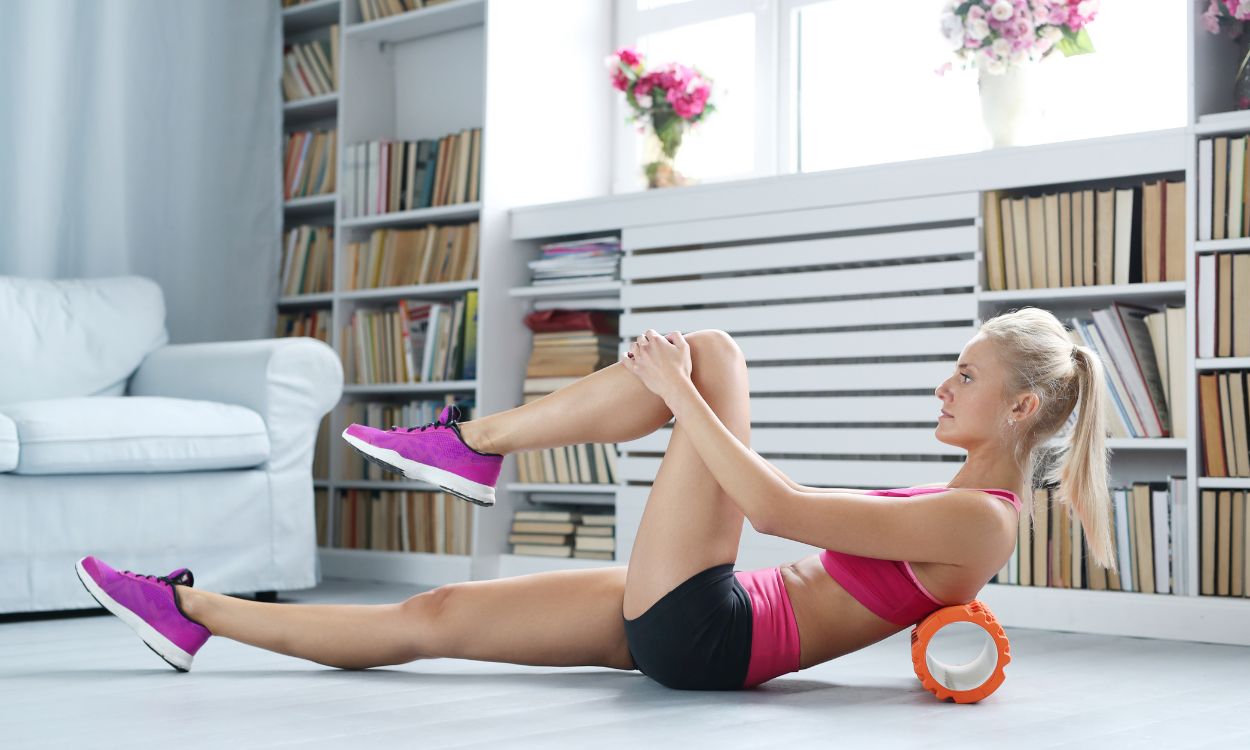Uncategorized
The Benefits of Using a Foam Roller for Recovery
Foam rolling has become a cornerstone in fitness recovery routines, offering a range of benefits for both athletes and casual exercisers. Whether you’re easing post-workout soreness or improving mobility, a foam roller can be your go-to recovery tool. This article explores the science behind foam rolling, its key benefits, and how to incorporate it into your routine.
What is Foam Rolling?
Foam rolling, also known as self-myofascial release (SMR), involves using a cylindrical piece of foam to apply pressure to specific areas of the body. By rolling over tight muscles or knots, you help release tension in the fascia, the connective tissue that surrounds and supports muscles. This simple yet effective practice is widely recommended by physical therapists, trainers, and athletes for its ability to enhance recovery and performance.

The Science Behind Foam Rolling
When you work out, your muscles experience microtears that can lead to inflammation and stiffness. Foam rolling helps by increasing blood flow, breaking up adhesions, and activating the nervous system. The pressure applied stimulates circulation, delivering oxygen and nutrients to the muscles. It also helps loosen adhesions or “knots,” improving flexibility and range of motion. Additionally, foam rolling activates sensory receptors in the muscles, which can decrease muscle tension and pain.
These physiological effects make foam rolling an excellent tool for both recovery and injury prevention.
Key Benefits of Using a Foam Roller for Recovery
Relieving muscle soreness is one of the most common reasons people use foam rollers. Delayed-onset muscle soreness (DOMS) often follows intense workouts. Foam rolling alleviates this discomfort by reducing inflammation and improving blood flow. Regular use of a foam roller after workouts can shorten recovery time, helping you stay consistent with your fitness routine.
Foam rolling also improves flexibility and range of motion. Tight muscles can limit mobility, affecting workout performance and increasing the risk of injury. Foam rolling loosens these tight spots, making dynamic stretches more effective.
By enhancing lymphatic drainage, foam rolling helps eliminate waste products like lactic acid. This accelerates muscle recovery and reduces the chances of stiffness or cramping. It also reduces the risk of injury by addressing muscle imbalances and releasing tension. Correcting poor movement patterns helps reduce strain on joints and muscles, lowering the risk of injuries during workouts or daily activities.

Another key benefit is its affordability and convenience. Unlike massage therapy, which requires appointments and higher costs, foam rolling is a budget-friendly option you can do anytime, anywhere. Most foam rollers are lightweight and portable, making them a versatile addition to your fitness gear.
How to Use a Foam Roller Effectively
To maximize the benefits of foam rolling, choose the right foam roller. Foam rollers come in various densities and textures. Beginners should start with a softer roller to avoid discomfort, while experienced users may prefer firmer or textured rollers for deeper pressure.
Target key muscle groups such as the calves, hamstrings, quads, glutes, and upper back. Roll slowly over each area, spending extra time on any tender spots. Use proper technique by applying moderate pressure and avoiding rolling directly over joints or bones. Roll for 30 to 60 seconds per muscle group, maintaining a steady pace and breathing evenly.
Incorporate foam rolling into your routine by using it as part of your warm-up to improve circulation or after workouts to aid recovery. Regular sessions, even on rest days, help maintain muscle health.
Common Mistakes to Avoid
While foam rolling is generally safe, improper use can lead to discomfort or limited results. Rolling too fast reduces effectiveness. Roll slowly to allow your muscles to relax and the fascia to release. Applying excessive pressure can bruise or irritate the muscles. Start with light pressure and gradually increase as your body adapts. Ignoring pain signals is another mistake. Foam rolling can be slightly uncomfortable, but it should never cause sharp or severe pain. Ease off and consult a professional if needed.

Choosing the Best Foam Roller
Foam rollers come in various shapes, sizes, and materials. Soft foam rollers are ideal for beginners or those with sensitive muscles. Firm foam rollers provide deeper pressure for experienced users. Textured foam rollers have ridges or bumps for targeted massage. Vibrating foam rollers use vibration technology to enhance muscle relaxation and recovery.
Real-Life Applications of Foam Rolling
Foam rolling isn’t just for gym-goers. Office workers can relieve tension from prolonged sitting by rolling out the lower back and hip flexors. Athletes use foam rolling to enhance performance and reduce the risk of overuse injuries. Older adults can maintain flexibility and alleviate stiffness with gentle foam rolling exercises.
Expert Tips for Success
To make the most of foam rolling, stay consistent. Foam rolling works best when done regularly. Aim for at least two to three sessions per week. Combine foam rolling with other recovery methods such as stretching, hydration, and proper nutrition for optimal results. Listen to your body and adjust your technique or pressure based on how your muscles feel.
Conclusion
Incorporating a foam roller into your fitness routine can revolutionize your recovery process. From relieving soreness to preventing injuries, this simple tool offers a host of benefits that cater to all fitness levels. Affordable, portable, and effective, foam rollers are a must-have for anyone looking to improve their overall well-being.


